We use cookies to improve your experience. By continuing to use this website you agree to our cookie policy.
In recent years, augmented reality and virtual reality are being integrated more and more into everyday life, particularly in the fashion industry and retail, allowing shopping to become more innovative, immersive and creative than ever before. New experiences are being created every day to give customers the perfect experience and make their shopping journey memorable, unique, and perfectly fit their own personal tastes.
So how are AR and VR revolutionising the fashion industry, and what does that mean for customers and the future of retail? Let’s find out.
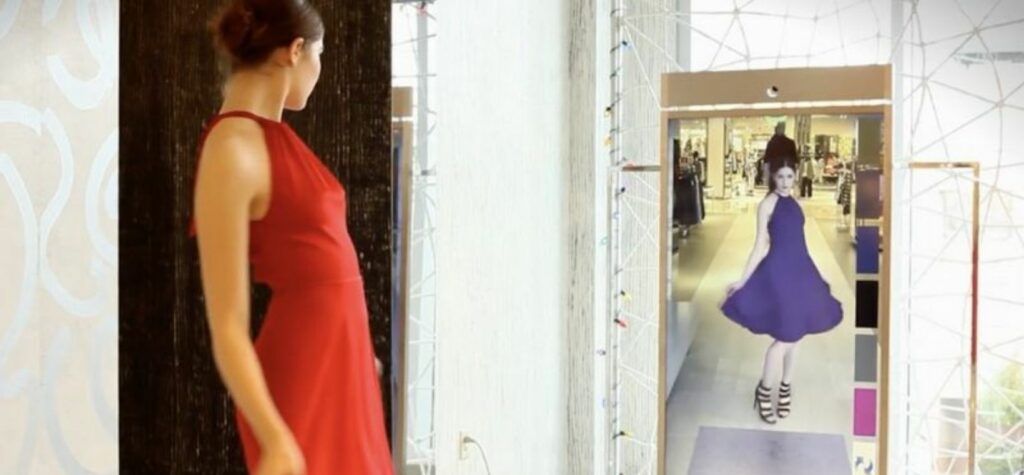
The Difference Between AR and VR
Over the Covid-19 lockdown, people were unable to visit physical stores which lead to a surge in eCommerce sales, with many companies making their products more readily available.
Augmented and virtual reality have become leading innovative forces in making the shopping experience more interactive and engaging. The virtual digital experience is a creative way for brands to showcase their products and make their buyer journey smoother and more experiential.
One billion people worldwide are using AR across all industries, and 32% of consumers are using it while shopping, the key demographic being people between the ages of 16 and 44. It provides unique and exciting ways for customers to browse through products, virtually try on clothes and encourages more sales. Having said this, less than 1% of brands are utilizing AR and the potential within its technology.
Augmented Reality
AR enhances the real world with digital elements. Mobile phones are one of the primary ways to interact with the world around you, allowing you to scan products or QR codes and receive information or view yourself wearing digital clothes, shoes or the latest make-up line.
It can bring the shopping and browsing experience to you, wherever you are from a geographical perspective, making it widely available to customers even if they’re not local.
AR has been used in various ways in recent years, including in Google Sky Map and the popular mobile game PokemonGo in which when you look through your phone, you can see the Poke eggs in the physical environment around you. AR emphasizes fun and imagination. Seeing the world differently keeps things fresh, reinvigorating your interest in an everyday part of life – in this case, shopping.
So imagine you are sitting at home and you want to buy a new hoodie. You could go to your local store, browse the options they have available, feel the material, try it on in a changing room, see how it fits you. Maybe you buy it, or perhaps you decide it looked better on the hanger. But then you consider online shopping—the world at your fingertips. You can search hoodies from any brand and any shop, try them on or compare prices with a tap of the finger. It certainly makes buying a lot easier. And with the new leaps and strides AR technology is making, that online world of retail is becoming even more exciting and interactive, engaging you with the content and keeping the shopping experience feeling original and different to going to a brick-and-mortar store.
AR Try-On is an effective way to try out a product before you buy it, all without having to travel to a store and queue for a changing room. You can see what an outfit would look like on you in an instant. Even if you don’t find anything you fancy, you can still experience the entertainment of your catwalk with the digital enhancements adding a unique flavour to the shopping experience. Better yet, you can share your experiences on social media, getting your friends and followers in on the trends and making the world of shopping more interactive, social and transforming it into a show of community spirit.
Snapchat and Instagram have been leading the charge with AR technology. Snapchat premiered AR Try-On in May this year, allowing users to try on clothes and accessories for free. In partnership with brands such as Prada and FarFetch, the new feature utilised a technology that responds to the movement of your body. Gucci has also offered AR shopping experiences on the app.
Instagram, meanwhile, has entered a partnership with Carlings and Facebook, debuting an AR t-shirt. Customers can buy the white tee from Carling’s store. When the Instagram filter is activated, the logo on the front becomes a tracking point for your camera, allowing any graphic of your choosing to become super-imposed on the shirt, no matter how you move.
Connecting apps, AR technology, and shopping have added a whole new dimension of interactivity to shopping. It is akin to carrying a pocket changing room around with you along with the added excitement of keeping up to date with the latest trends, sharing with your friends and finding new entertainment in even the smallest accessory.
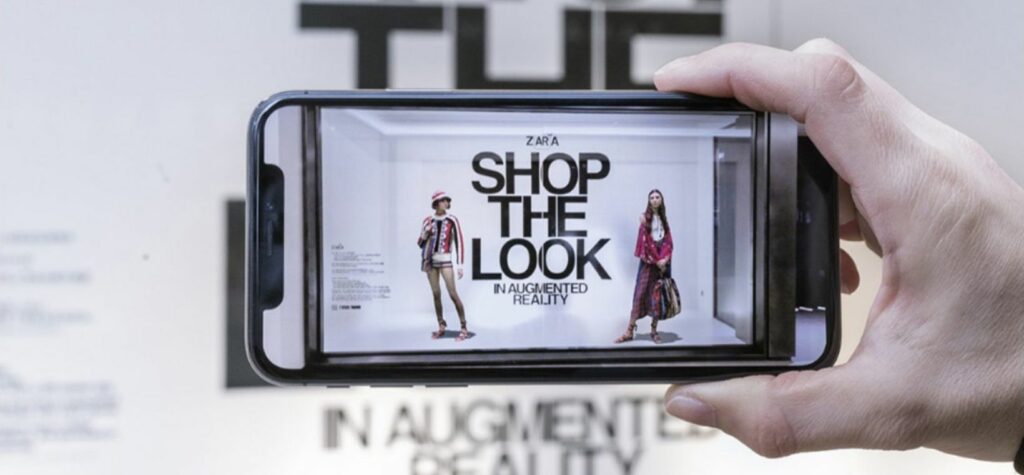
Virtual Reality
VR differs from AR in as much as it creates a whole new world to the one you’re living in. It simulates reality and puts you anywhere in the world: a forest, a city, even space. VR has been most commonly used for entertainment, particularly in video games, to make you feel like you’re actually inside the world itself. But things are changing, with fashion brands beginning to utilise the technology to showcase their products in a virtual space of their choice.
Virtual reality is becoming an exponentially more popular choice for fashion shows since Covid-19 began. Back in 2020, Balenciaga hosted a VR show for its A/W2021 collection, providing new and innovative ways for guests to enjoy the latest in fashion from the comfort of their homes. This brought the excitement of the catwalk directly into people’s homes, providing them with a unique opportunity to experience high-end fashion in a new and intimate art form.
Even earlier, in 2017, Samsung VR headsets were used at the New York Fashion Week to transport attendees to an Italian city, with digital mannequins showcasing the collections. This kind of globe-trotting experience was a whole new dimension to how brands had been presenting fashion until that point.
With VR, even regular shopping could be taking place in a completely virtual retail space. Imagine the possibilities if a brand releases a themed collection. Perhaps a collection could be inspired by the creams and leathers of steampunk fashion, and consumers will be transported to a steampunk Victorian London, zeppelins flying overhead. Maybe you’d even spot a few historical figures as you explore the clothes on the digital models.
VR is a hub of opportunity to revolutionize the fashion industry. There are so many more great strides to be taken with the technology. Still, the ability to travel to whole new worlds from the comfort of your own home is an adventurous and exciting concept. It will transform retail into a unique virtual fashion experience.
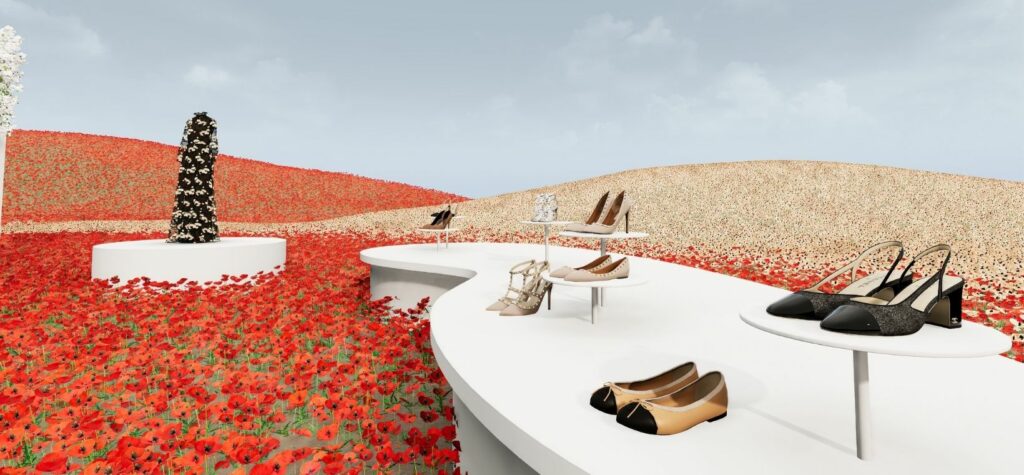
Brands That Use AR and VR
With AR and VR revitalising the fashion industry and changing the way people shop, it only makes sense that more and more brands are taking advantage of the rising trend. Every brand wants to be the best brand to deliver a once-in-a-lifetime experience or the most engaging one. The competitiveness means the public is benefitting from ever-improving AR and VR shopping experiences.
Burberry
Burberry has made more than one stride into the world of AR shopping. In February 2020, they partnered with Google to bring AR shopping to their Google Search technology. This allowed users in the UK and the US to experience Burberry products set into their environment, helping customers learn more about the product before purchasing. This adds an informative layer to their shopping experience by providing details you wouldn’t be able to find out in a regular shop.
Burberry’s also created an AR experience for their SS21 campaign, which allowed users to create their own 3D Pocket Bag sculptures, pushing for more digital content and enhancing the customer’s online fashion journey. Entertainment is the name of the game. Interacting with Burberry’s products increases shoppers’ excitement and engagement with the brand. It helps to inspire their creativity and increases the sense of community, making each participant feel like an essential part of the project and thus building loyalty and love for the brand.
Burberry x Harrods also used a virtual experience to celebrate the launch of their Olympia bag. The Burberry x Harrods virtual experience is championed by a modern ethereality with 3D Greek statues surrounding the room, enhancing the Olympian heavenly tone. Using a QR code, the virtual experience allowed users, at the pop-up locations, to place a digital version of one of the Elpis statues in their surroundings and watch it come to life and walk towards them. This helped to make the experience more immersive, allowing users to share it with friends. The whole experience inspires awe, the elegance and refinement of the virtual experience making the product that much more alluring to the audience.
Dior
The make-up and fashion brand has added several filters to Instagram, including try-ons for accessories like hats and headbands. One recent addition is a complementary experience promoting their 2020 holiday makeup line with make-up artists recreate the AR firework makeup look in real life. AR creates a visual entertainment experience in both the digital and physical worlds, building up positive perception and enjoyment for a product. The social element draws in a new demographic.
Dior also held an event in partnership with Facebook, Instagram and Snapchat, to allow users to digitally try on their new Dior-ID sneakers in a selection of colours. AR is a great way to premiere new looks and test the popularity of products with the public. This engagement-encouraging approach to campaign marketing is a surefire way to get people interested in products, gaining more personal experience than they would otherwise get in a shop.
Already back in 2015, Dior has dipped its toes in VR technology, designing a VR headset, Dior Eyes, that gives users a VR sneak peek into how models prepare backstage for a fashion show. The Eyes were created in partnership with DigitasLBi Labs using a 3D printer, and they provided an immersive 3-dimensional view of the backstage fashion world with 360-degree vision. This provided the public with a chance to experience the brand exclusively in a way they had yet to see it.
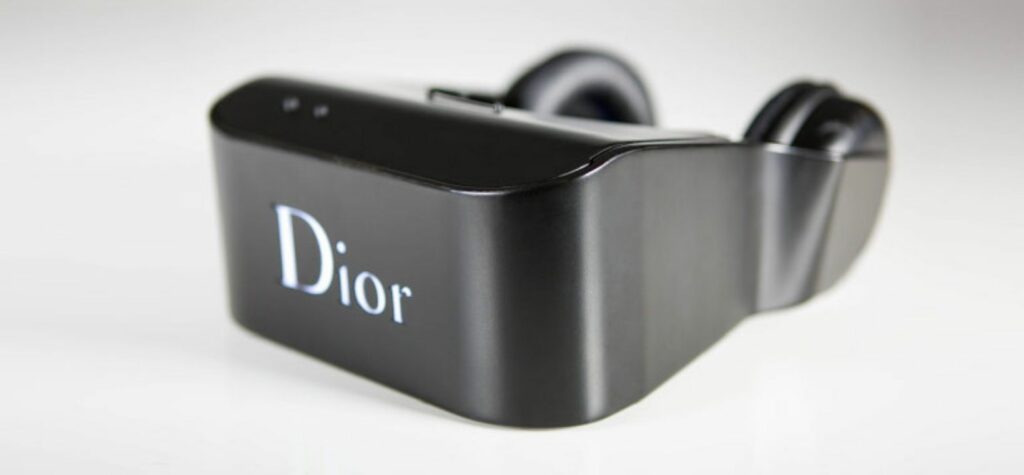
CHANEL
CHANEL kicked off their use of AR technology back in 2011, enabling users to try on the J12 watch on their app without having to go into a physical store. Since then, they have worked with FarFetch to create high tech dressing rooms. Clients choose their looks and accessories, book an appointment and then travel to the boutique to experience the intelligent mirror in action. It displays their choices and shows customers multiple angles, using a Radio Frequency ID bar to detect new items brought in and subsequently displaying the original article from the runway show. This is a unique, modern approach to the shopper’s journey, bringing in exciting new features that entice people back to physical shops, tying together the real and digital worlds.
2021 saw CHANEL’s debut of its impressive Lipscanner technology, the new feature comprising an AI technology that can scan any image and find a corresponding colour from one of the brand’s 400 lip products. It encourages experimentation, with users allowed to snap a picture of any colour they like – such as pale pink candy floss – the technology will match a lipstick colour that can then be digitally tried on. The technology takes into account skin tone, age and the shape of one’s lips. With so many different products to try, users could become engrossed in seeing how they look in various shades, bringing a level of entertainment to something that can be an example of ‘going through the motions in their day-to-day life.
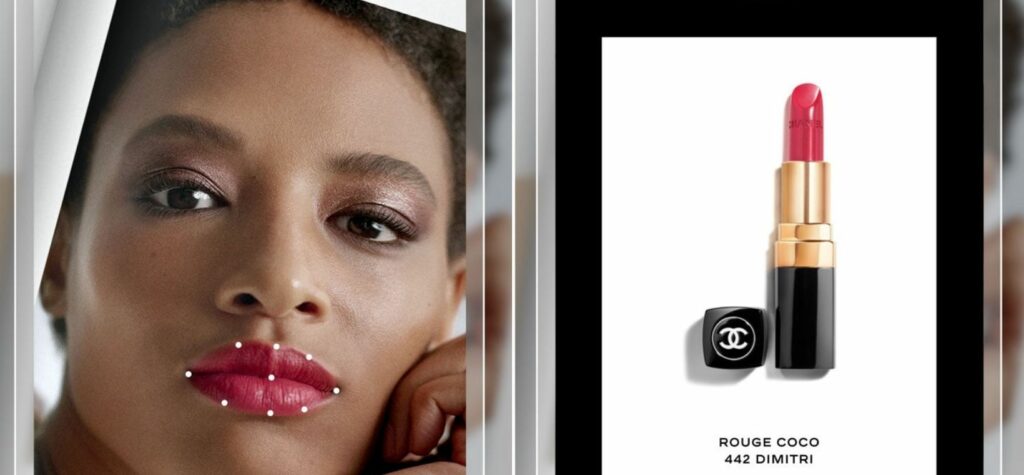
ASOS
Online clothing store Asos is no stranger to creating a virtual experience for its users. In June 2019, they launched a Virtual Catwalk feature on their app, allowing users to point their camera at a flat surface and enjoy the AR experience of seeing a model exhibiting the brand’s clothes. This creates a more intimate shopping experience, making the clothes more appealing and accessible to the viewer. It’s informative, showing people what clothes would look like on their body type, and at the click of a button and users’ private environment.
Asos’ second venture into the world of AR came with the launch of an app called See My Fit, which allows users to see what an item of clothing looks like on different body types. It trialled with 800 products back in January 2020, slowly rolling out more options to keep up customer engagement and protect models from coming into the studio during Covid. It’s another valuable tool to help shoppers make a more informed decision about clothes, saving them the hassle of trying them on physically and significantly reducing the rate of unnecessary returns.
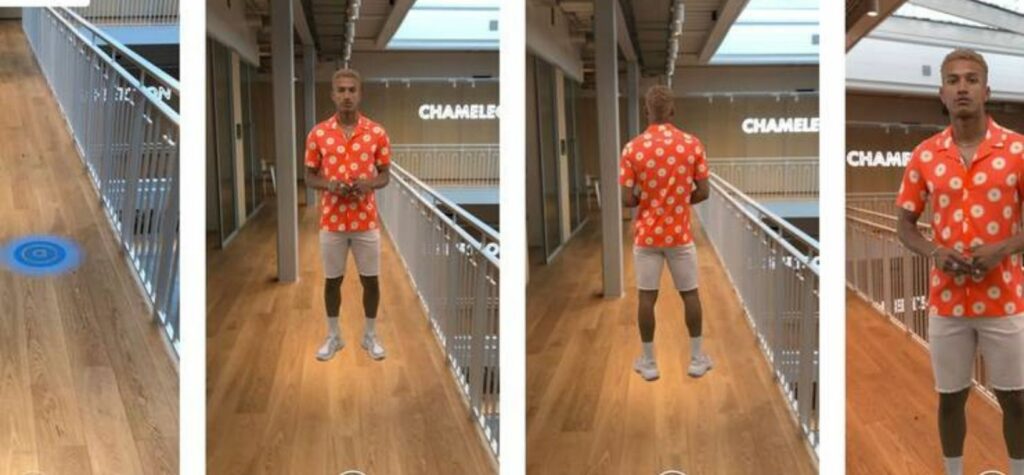
Benefits of AR and VR Shopping
AR and VR shopping can make customers’ lives easier if they cannot get to a store or want to fully explore an item before buying, helping them make more informed decisions. In a Google Consumer Survey in 2019, 66% of people said they were interested in using AR for help while shopping.
Layout of Products
A physical brick-and-mortar store can be pretty daunting. Its size and layout sometimes mean it can be challenging to find what you’re looking for. Some users find product discovery a lot easier when shopping in had experience the brand exclusively online stores, where the structure is simpler and more organised. VR shopping adds another dimension to this, making it easier to find items and see if they suit you, making the journey from browsing to buying a lot smoother, encouraging sales.
Easier to Try on Clothes
Changing rooms can often lead to long waits. So often, when shoppers are waiting for a space to become available, they tend to abandon their items and leave the store. AR changing rooms bypass queues altogether. Customers can instantly try on clothes they like, making their shopping experience more positive and providing further encouragement to purchase. It also makes the process more engaging and entertaining as you try on as much as they want for as long as they choose to. No limits and no one is waiting impatiently for them to vacate a changing room.
A Personalised and Interactive Experience
Engaging customers with fashion retail is the name of the game. If they aren’t attracted to what is being sold and how it’s being presented, they are less likely to make a purchase. An interactive VR shopping experience puts the customer front and centre, right in the thick of the action. Any information they need about a product will be right at their fingertips, and the apps can suggest products based on their search and purchase history. This increases customer satisfaction and confidence in brands, making it more likely for them to buy products and less likely for them to return them.
Improves Brand Awareness
With AR filters and features taking social media by storm, the likelihood of users sharing their AR experience increases tenfold. Their engagement with a brand’s product inspires them to share the filters of them wearing AR make-up or clothes, generating interest from their audiences, increasing the public’s awareness of a brand’s features, and inspiring people to become potential customers.
Future Trends in Virtual Fashion Retail
The continued rise of eCommerce and the consistent developments in technology mean that AR and VR shopping will only get bigger and better. Virtual Fashion shows continue to blend real life with virtual reality, a trend only expected to grow while brands are rolling out more and more features for use on social media such as Snapchat, Instagram and Pinterest. Audiences will be treated to deeper and deeper levels of entertainment as companies begin to test the limits, extending the capabilities of AR and VR.
It also creates a more environmentally-friendly industry and makes fashion retail more accessible to the public. AR in retail is set to be worth 12 billion dollars by 2025, with one in three of the Gen Z generation projected to be shopping with AR by 2025. More than one in three shoppers expect AR retail technology to become more readily available within the year. 44% of Snapchatters are already saying they would prefer to use AR to shop for clothes and accessories over other products. This proves its usefulness in making shopping more engaging and fulfilling, bringing the essence of a physical shop into the home and enhancing it to make it a unique experience that you would only be able to have in a digital world.
AR and VR have ushered in a rejuvenation of the shopping experience for customers, giving them new ways to look at products and making the prospect of buying more enticing. More and more brands are using the technology in creative and innovative ways, interweaving it seamlessly into their brands and the lives of their customers, creating an interactive and enjoyable experience that is more likely to drum up business, increase customer satisfaction and bring the industry further into the future. The shopping experience has been revolutionised for a new digital age of social media and entertainment, and it can only get better from here.
